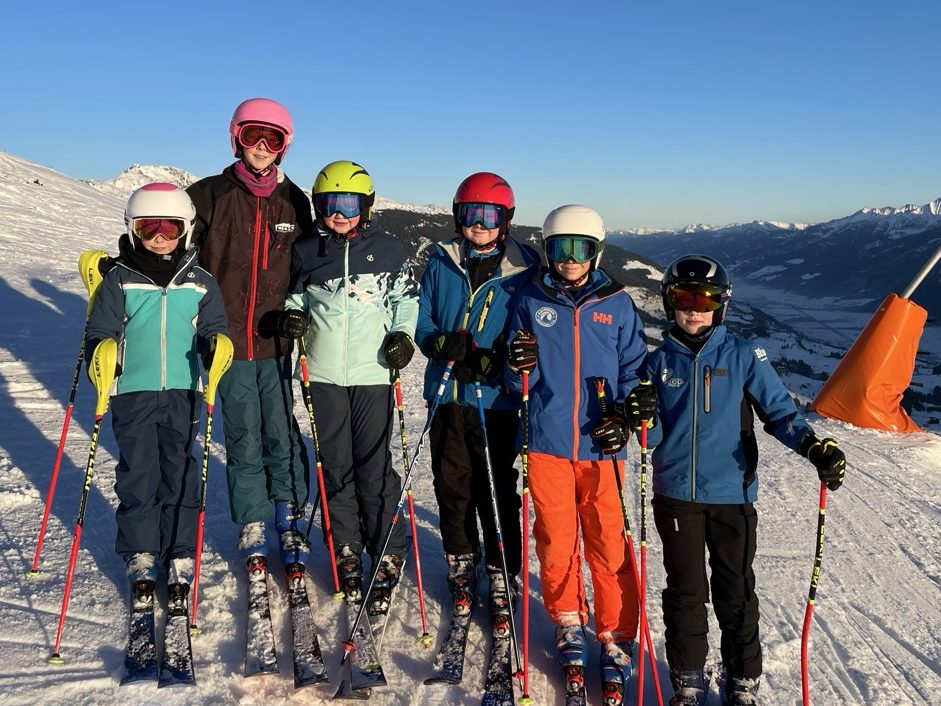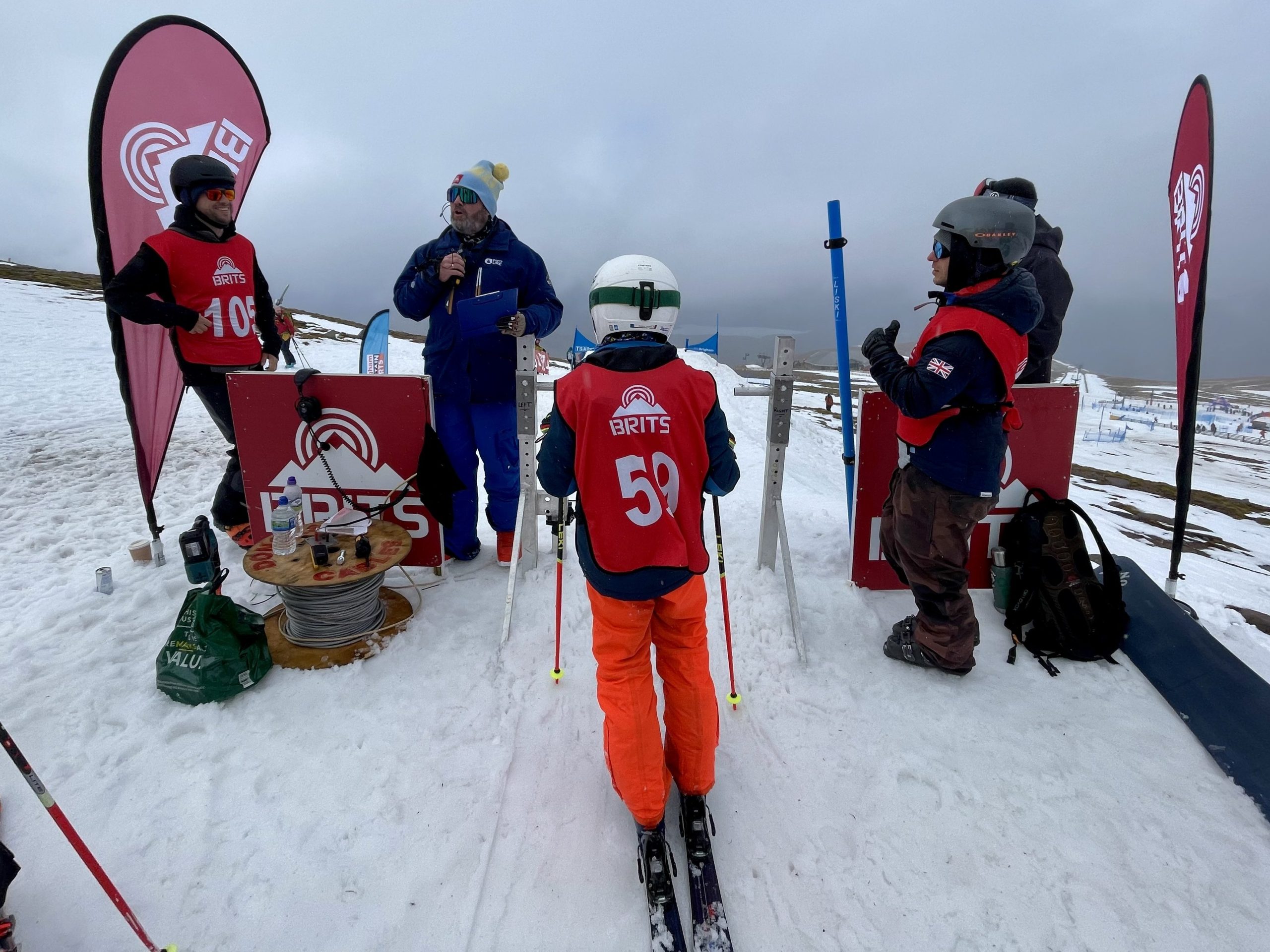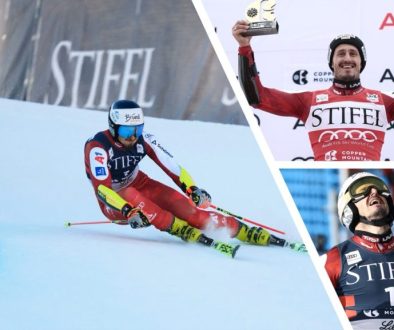What we do, and why we do it
Scottish Ski Club race training has a clear objective for its trainees – to become better ski racers. Believe it or not, that isn’t just about training gates, marginal gains, and chasing podiums. We aim to develop well-rounded, resilient skiers who love the sport for life. Everyone has the high potential to be good at lots of different things, and it’s our job as ski coaches to help them reach their peak skiing potential.
This article refers to “athletes” a lot. You might think that this isn’t relevant to your child – especially if they have only just started ski racing, or are taking part in grassroots-level activity – but it does! The Oxford dictionary defines an athlete as “a person who competes in sports”, so even if your child is preparing for their very first race, they are an athlete.
What we do
Ski racing is a late specialisation sport. In short, this means an athlete is likely to reach their full potential by participating in a variety of sports at a young age, rather than focussing solely on skiing. Our training aligns with the UK’s Long-Term Athlete Development (LTAD) model, which is developed and supported by the home nations, including Snowsport Scotland and GB Snowsport. This internationally recognised framework helps coaches to shape training programs that support young athletes over the long term, maximising both performance and enjoyment.
The LTAD Stages in Ski Racing:
- FUNdamentals (ages 5-9): Focus on fun, movement skills, and basic skiing ability. It’s about variety – not early specialisation.
- Learn to Train (ages 8-12): Introduction to race technique and strategy, but still with a strong emphasis on all-mountain skiing and multiple sports.
- Train to Train (ages 11-16): Greater focus on structured training, physical conditioning, and ski-specific skills. Racing becomes more regular, but skill development remains the priority.
- Train to Compete (ages 15+): Athletes now specialise more fully in ski racing, with tailored strength and conditioning, performance psychology, and competition strategy.
- Train to Win / Active for Life: At the highest levels, the focus is on peak performance. But crucially, the LTAD also supports lifelong participation—whether in coaching, recreational skiing, or sport leadership.
Technical background
Coaches use the acronym TTPPEE (“tee-pee”) to develop skiers. These are the six areas where improvements can be made. The importance of each area will shift over time and between individuals, but each area is essential to developing a successful, well-rounded ski racer.
| Technical | Skiing technique, skills and drills, and understanding the process |
| Tactical | Decision-making, reading terrain and line, adapting to conditions |
| Physiological | Agility, balance, coordination, fitness, and strength |
| Psychological | Positive attitude, mental preparedness, resilience, and teamwork |
| Equipment | Tuning, maintenance, understanding rules and appropriate what is appropriate kit |
| Environment | Adaptability and resilience in all conditions, creating a positive team atmosphere |
How we do it
Our training is not just about getting results as quickly as possible. That might sound counterintuitive – of course we want to maximise every athlete’s potential – but there’s so much more to ski racing. The sport naturally builds respectful, independent, organised, and resilient individuals by virtue of its intense training and competition environment. Children gain so much through race training even on Scottish hills, and that is amplified on a residential overseas camp. Our coaches encourage SSC trainees and their families to recognise that.
Many children’s and minis teams spend a significant amount of time training in gates. This is partly because it’s relatively easy to set up a slalom or GS course-based training environment, and it looks great – after all, that’s what World Cup teams do! There are also external pressures, such as expectations around immediate performance improvements in upcoming races.
However, that doesn’t necessarily fit within the LTAD model—especially before the Train to Train stage (typically U14+). Even then, skiing gates shouldn’t overly dominate on-snow time. We believe around 50–60% of total ski time spent in gates is a good maximum (not a target!). More than that, and training can become repetitive and even counterproductive. It’s not uncommon for racers to get so bogged down in skiing gates that they no longer enjoy simply skiing around the mountain, but that is the whole point!

Skill Development
It’s very difficult to make technical changes while skiing through a course. Gates are best used to develop tactical skills, whereas technical improvements happen most effectively outside of courses.
That’s why we put a big emphasis on free-skiing at SSC, whether it’s technical drills or simply blasting around the mountain in a train. Even group skiing without explicit instruction is hugely beneficial for younger skiers, particularly in the FUNdamentals stage. And yes, we’ll sometimes ditch the training lane altogether to go ski powder – because that’s what skiing is all about!
Fun & Team Spirit
We strive to make every SSC training session as fun and rewarding as possible. Race training and competition can be physically and mentally demanding, which is why a positive team environment is essential. Supportive teammates, lasting friendships, and a shared love of the sport are all key parts of what we do. We expect every SSC trainee to be a good sport, a respectful individual, and a team player.
Mindset & Resilience
The club actively nurtures a positive mindset and strong engagement in the coaching process. That means encouraging a love of learning, fostering determination, and building the grit needed to overcome challenges – not just in sport, but in life. These qualities are reinforced both on and off the hill, including through theory sessions, mental skills discussions, and reflection activities.
Physical Literacy
Developing agility, balance, and coordination (ABCs) is essential for success in a complex sport like skiing. These skills are supported through age-appropriate dryland training, as well as dynamic on-snow activities. Strength and fitness also improve naturally through time on skis, especially at altitude or during intensive camps.
Tactical Awareness
Versatile skiing and the ability to read terrain are not just relevant for racing—they’re critical for all-mountain skiing too. Whether inside or outside the gates, we teach athletes how to adapt and anticipate, helping them become confident, adaptable skiers in all conditions, who will get the most out of any day, even a bad weather one!

Why LTAD matters
Too much, too soon can lead to physical injuries, mental exhaustion, and even a complete loss of interest in skiing. That’s why LTAD isn’t just about improving performance – it’s about protecting young athletes.
By focusing on age-appropriate goals, we ensure:
- Progression without pressure.
- Balanced development across physical, mental, and social domains.
- Athletes stay engaged and excited about skiing.
- Time for other sports, helping avoid overuse injuries and building all-round athleticism.
This approach doesn’t mean we hold racers back – it means we prepare them better for long-term success. Some of the world’s best racers, like Mikaela Shiffrin and Dave Ryding, were multi-sport athletes who followed a progressive path (albeit in quite different ways!) and not one of early specialisation and overtraining.
Our Commitment
At Scottish Ski Club, we are committed to delivering high-quality race training that reflects the best of coaching science, our love for skiing, and the unique camaraderie of our sport. We believe in developing racers who are not just competitors – but confident people, and passionate skiers for life.
Whether your child dreams of medals or mountain adventures, we’re here to help them enjoy the ride and reach their potential, at their own pace.


Training and competition volume, and avoiding burnout
July 2, 2025 @ 4:03 pm
[…] and dreaming of future success. And we think skiing (not just racing) is for life – see our previous post about how we foster that. But with all that excitement comes a risk that can derail even the most promising young skiers: […]